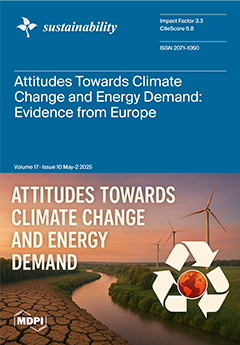Global efforts to reduce climate change have increased, necessitating more comprehensive research. However, empirical evidence of the implication of synergizing foreign direct investment (FDI) and renewable energy consumption (REC) to reduce environmental pollution, specifically with nitrous oxide (N
2O) and methane (CH
[...] Read more.
Global efforts to reduce climate change have increased, necessitating more comprehensive research. However, empirical evidence of the implication of synergizing foreign direct investment (FDI) and renewable energy consumption (REC) to reduce environmental pollution, specifically with nitrous oxide (N
2O) and methane (CH
4) emissions, is missing in the literature. This research investigates the impact of FDI, REC and their synergy in facilitating technological leapfrogging, analyzing their linear, non-linear and indirect effects on environmental pollution (CO
2, N
2O and CH
4 emissions). The analysis focuses on 81 developing countries, analyzing them at both the general level and by income groups—low-income countries (LICs), middle-income countries (MICs) and high-income countries (HICs), with government effectiveness and economic growth serving as mediating variables. Using Canonical Correlation Regression (CCR), Fully Modified Ordinary Least Squares (FMOLS) and clustered Pooled Least Square (PLS) techniques, the analysis covers data from 2003 to 2023. The results indicate that at the general level, FDI and REC increase N
2O and CH
4 emissions individually. However, their integration mitigates N
2O and CH
4 emissions. Additionally, the relationships remain consistent even when government effectiveness and economic growth are considered mediators. However, economic growth is more pronounced than government effectiveness in reducing environmental pollution. The non-linear analysis also reveals that FDI and REC have a significant U-shaped effect on CO
2 emissions. However, their synergy demonstrates an inverted U-shaped nexus with CO
2 emissions. At the income group levels, the interplay of FDI and REC reduces N
2O and CH
4 emissions in MICs; however, in LICs and HICs, it increases N
2O and CH
4 emissions.
Full article





